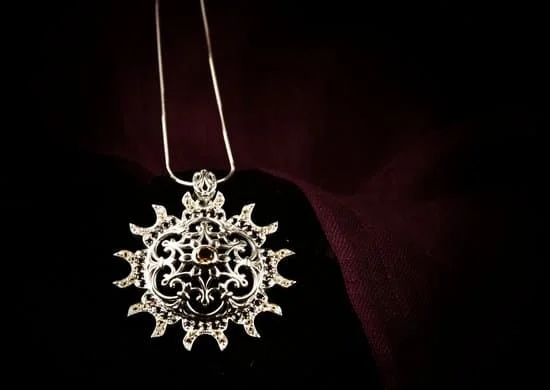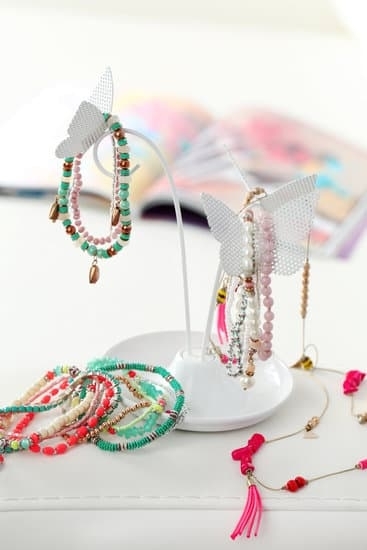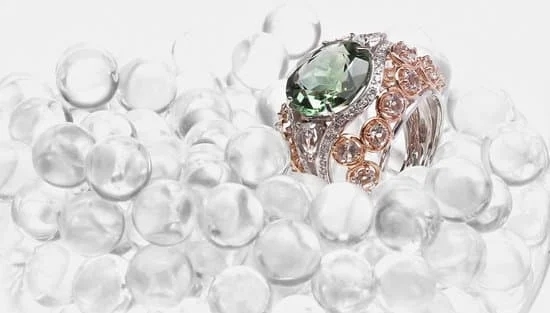The Victorian era was a period of profound change for many aspects of life, with big innovations in fashion and jewelry design. During this time, women especially put great importance on wearing the latest fashions, including ornate jewelry made from a variety of different materials and gems. So what jewelry was used in the Victorian era? Let’s take a closer look at some of the most popular styles that emerged during this period.
Gemstones Were All the Rage
One of the striking features of the jewelry designs worn in the Victorian era were their abundance of precious and semi-precious gems. Many pieces were adorned with garnets, sapphires and opals, as well as diamonds which were especially sought after by wealthier members of society. With their bold shapes and sizes, these gemstones helped to create statement pieces that really made an impact when they were passed through social circles at gatherings or parties.
Charming Charms Were Also Popular
Another style which was very popular in the Victorian era was charm bracelets and necklaces. These pieces were often filled with tiny trinkets such as charms shaped like keys or hearts, or miniature sculptures inspired by nature or animals such as birds or fish.
They typically included several precious stones like pearls or rubies dotted about them for added decoration too. The idea behind these charming pieces was that each charm had its own unique meaning; stories could be told just with a simple glance at them from somebody else’s perspective.
Combining Different Materials To Create Show-Stopping Pieces
Some truly remarkable looks could be achieved during this time with clever combinations of different materials for even more expressive effect. This could include intricate lace detailing alongside gold or silver beads and enameled motifs all working together to create equally gorgeous but very distinctive looks tailored to different individual preferences. Jet necklaces appear to have been especially popular; although not actually made out of diamonds themselves, they offered a similar shine without the exorbitant cost associated with real jewels.
Conclusion: More Than Just Aesthetics
Towards the end of the Victorian era, things began to move away from purely aesthetic considerations towards symbolism and messages being conveyed through wearable artworks instead. Examples include cameos featuring particular figures representing sentiments like strength amidst adversity or fidelity within marriage (although there is plenty which can be found on wearable items nowadays.)
Whatever your interest might be though it is clear that there are still so many awe-inspiring items from this glorious period waiting to be unearthed – so why not start looking?.
Popular Styles of the Late Victorian Era
During the Victorian Era, the jewelry styles of this time period were mainly influenced by the ideas and designs of Queen Victoria. Jewelry trends included a range of classic elegant traditional pieces that are still popular today. One such style was the gemstone set jewelry which could use a range of materials including gold, silver and base metals as well as stones like diamonds, rubies and sapphires.
The pieces were often intricately crafted with an attention to detail, displaying soft subtlety in design for a sophisticated finish. This Victorian-inspired look definitely oozed opulence and luxury, something which was very desirable in the late 19th century.
One iconic style from the Victorian Era which is still popular to this day is brooches or ‘pins’ as they were often referred to at that time. Brooches traditionally served two purposes – to denote high social standing or used for purely decorative purposes as part of fashion jewelry.
Victorian brooches used a variety of material including gold, silver and also rhinestones for affordable pieces suitable for all budgets. Inventive designs include insect brooches; these usually feature creatures like butterflies and dragonflies crafted out of precious gems which had an air of symbolism to them at the time.
A more symbolic type of jewelry used during this era was hair combs which come in many variations although they all featured delicately intricate metalwork perfect for pinning up full bodied hairstyles worn lavishly by women at that time.
Hair combs ranged from extravagant diamond set pieces to simpler beaded designs made with colored glass beads held together on small metal frames by wire work formed into elaborately curling shapes as well as organic flowery motifswhich symbolize aspects of nature so integral at this point in history.
Hair combs were also widely worn for birthdays and religious holidays accordingly when needed over individual hairstyles. All these impressive styles resulted from years of experimentation with various types of jewelery making methods during this period making it truly one-of-a kind fashion statement.
Mourning Jewelry
The Victorian era saw an increase in the popularity of mourning jewelry. This type of jewelry was worn by loved ones of the deceased to honor and remember their lost family and friends. Mourning jewelry includes a variety of pieces, such as necklaces, pins, bracelets, earrings, and rings. Some necklaces consisted of a lock of the deceased person’s hair encased within locket pendants or enclosed in beads with memorial inscriptions engraved on them.
Brooches were often crafted with intricate designs that incorporated symbols like broken branches, sparrows, and doves meant to represent sadness and loss. Lockets also doubled as a reminder to remember every day the person who had passed away. Bracelets could even be designed to create an archway where each side could contain an image of the deceased’s face on either side; this served as way for family members to keep the memory close at all times.
Some Victorian memento mori often featured symbols associated with death just as much as they were with mourning; including hearts pierced by arrows or daggers and skulls decorated with crosses or roses. Thin skull illustrations made up a major motif during this time period; death was used heavily symbolically throughout many pieces of Victorian jewelry due to its prevalence within society during this time period. Death was almost like life in the 1800’s; death was accepted without judgment.
Victorian Jewelry also served as a sign of wealth or status among those privileged families who could afford it. From jet which was very popular in Victoria’s era due its versatile ability to play multiple roles including plain set jewels used for fine evening wear as well as being used for mourning pieces.
Jet gained popularity because it could be carved into highly detailed designs that look beautifully ornate when adding monograms or other embellishments indicative of mourning attire to honor faithful departed personalities from such high esteemed families back then.
The use of diamonds during this time period was even more limited than jet forming sophisticated yet ostentatious geometric shapes from rectangle set stones up through diamond set patterns lending themselves well toward elaborate expensive designs – providing further distinction for social status amongst purchasers.
Gemstones of the Era
The Victorian Era saw a shift in fashion that emphasized femininity and delicacy, as well as sumptuous materials. This was especially evident in the costume jewelry of the time, which featured designs that were both ornate and creative. These pieces featured an array of gemstones, many of them mined from all around the world. The gems used in Victorian-era jewelry are both enduring symbols of wealth and stunning works of art.
The most famous stones of the age included diamonds, sapphires, rubies, pearls, emeralds and amethysts. They were cut into a variety of shapes, including cabochons, diamonds, brilliants and more. Jewelers would also often combine multiple stones for a truly unique look that demonstrated their craftsmanship. Additionally, multi-colored agates were also popular during this period as they were thought to be able to bring luck and fortune.
Touches such as garnets roses were often added to embellish particular pieces with floral accents , while others might include engravings or intricate designs made from enameled or blackened goldwork. Depending on their size and quality , jewels could be set into rings , pendants , bracelets and even earrings.
Ancient Roman coins occasionally found their way into these pieces too at times , likely representing triumph over adversity to many women of the era who had faced difficult journeys to get where they were today. But whether they chose a piece with only one stone encrusted or one with denizens of precious gems , these jewelry styles forever remain tied to the elegance and splendor that came out of the Victorian Period.
Crafting Techniques
The Victorian era saw a surge in the popularity of jewelry as many craftsman honed their skills and techniques in order to create stunning pieces. This period in history is often thought of for its lavish and ornate pieces which were created with only the finest materials.
Jewelers relied heavily on traditional metals such as gold, silver, and copper, as well as precious stones such as diamonds, pearls, sapphires and emeralds. These elements combined with elaborate filigree and chasing designs made for some truly exquisite works of art.
Victorian-era jewelry was largely handcrafted using intricate techniques that are still admired today. Skilled jewelers took arts like repousse for example, which is the practice of hammering out a design onto the reverse side of a thin metal sheet, producing a raised pattern on the front. The technique was used to produce incredibly detailed and complex motifs to adorn necklaces, brooches, bracelets and rings.
The style corresponding with this age leaned heavily towards romanticism; jewelers sought to evoke symbols from nature when creating pieces – something which still influences modern-day designs today. Many items recently manufactured feature intricate designs reminiscent of that period including filigree birds or floral patterns crafted into plumes or lace-like forms.
In essence these classic styles never truly go out of fashion; they simply reach down through time to once again be appreciated by new generations of admirers who seek to incorporate such delightful pieces into their wardrobe.
Meaning Behind the Gems
The Victorian Era was an exciting period in jewelry history, with a unique aesthetic that is still being perfected today. The intricate art and design of Victorian jewelry captured the hearts of many people and had its uses beyond adornment. It was common for loved ones, family members, or friends to exchange jewels to signify their love and devotion to one another.
Many of the precious gems were thought to be imbued with special powers which were believed to protect against evil forces or provide strength in difficult times. This created a powerful symbolism behind each piece of jewelry crafted out of these materials.
One particularly popular gem during this time was carnelian. This striking orange stone came from India and Europe and it was often used for engagement rings, necklaces, bracelets, watches and brooches.
Carnelian carried a powerful message: that the wearer could expect strength, balance and courage when wearing the showy agate-like material. Girls also kept lockets containing carnelian stones so they could look at them whenever they needed encouragement or faith while going through difficult times or tough challenges in life.
The natural beauty of pearl was another gem appreciated during Victorian times; it carried a sentimental meaning that spoke volumes about love and sentimentality among the lovers who exchanged them as gifts between each other. In addition to wedding bands crafted out of pearls encrusted with diamonds, pearl brooches were also popular gifts given by wealthy families to married brides who have been gifted into marriage by their husbands-to-be on their wedding day as tokens of admiration.
During Victorian times pearls denoted purity, strength and protection from evil forces in addition to its celebratory qualities which acknowledged vainty trends related to what’s fashionable at the time. Women usually wore pearl necklaces layered several strands deep, proving that too much glamour is never enough for those enjoying these timeless pieces.
Aside from these two gems, rubies were also quite popular during the Victorian Era since they evoked feelings of wealth and power as well as signifying courage, passion and loyalty in relationships – especially romance ones. Not surprisingly diamond engagement rings became popular during this period since diamonds were thought of as symbols representing everlasting love (in addition to being incredibly beautiful.).
Turquoise – a semi precious stone – made appearances in many pieces due to its association spiritual protection while amethyst’s purple hues served up mesmerizing charm drawing attention towards curious onlookers. Altogether Victorians really grasped onto ornate styles using the vibrant colors coming out of gems as primary sources decorating extravagant items worth keeping around generations later – a nod to experienced craftsmanship focused around producing high quality merchandise that just gets better with time.
Fashion Forerunners
Jewelry has been an integral part of many societies since ancient times, and often serves as a sign of beauty, power, or wealth. It is no surprise that Victorian era jewelry was heavily influenced by the societal norms at the time. During this period, eye-catching pieces were used to reflect its wearer’s status or symbolise romantic love.
Victorian jewelry was often crafted from precious metals such as gold or sterling silver. Delicate stones like diamonds and sapphires were added for sparkle and finesse. Gold jewellery in particular was highly sought after due to its ability to signify affluence as well its natural healing properties, which were believed to bring peace and happiness, not just for the wearer but for all those around them.
Brooches with intricate floral patterns, lockets with secret compartments, colourful necklaces with magnificent gems – these adornments could be seen in palaces all around Europe. Many of today’s popular jewelry designs also owe their origins to this period – marquise cut diamonds and rose gold are just two examples who have stood the test of time.
The legacy of Victorian era jewelry is still very much alive today due to its timeless nature. The playfulness yet sophistication of these jewellery pieces continues to captivate wearers right now just like it did back then.
As a result, many style icons have opted for revisiting classic elements that far precede their own lifetime; bringing production techniques full circle while creating new fashion trends in their wake. Such creative thinking ensures that historic motifs such as emerald clusters or aquamarine pearls remain fashionable even centuries after they first emerged into popularity over one hundred years ago in the Victorian era.
Conclusion
Victoria jewelry, which was made during the long reign of Queen Victoria from 1837 to 1901, is a classic representation of era’s innovation and style in the world of jewelry. Popularly known for its intricate designs, delicate motifs and symmetrical patterns, it has become one of the most iconic and highly sought after pieces in today’s world.
In particular, Revivalist jewelry or revivals of classic Greek-Roman designs were some of the most popular items among Victorian women at that time.
The Victorian Era jewelry collection featured a plethora of timeless pieces such as lockets and brooches fashioned with gold filled or plated settings and precious stones such as rubies, diamonds, pearls and sapphires. Necklaces were another prominent feature crafted with twisted silver wire ropes surrounded by a ornamental clasps set in solid gold or silver.
Bracelets ranged from plain to more elaborate designs featuring gardens-of-Eden motifs with alluring fruit emblems. While earrings brought a new wave of style options either styled as drops or studs made out of ornate silk threading and bead work encrusted with gems like onyx, garnet or moonstone.
A famed symbol for royalty was often seen among these fashionable pieces which included weeping willow trees crafted into pendants; birds like kingfishers signifying loyalty and eternity; anchors depicting faithfulness; serpents representing knowledge; roses carved into brooches; daisies signifying innocence along with an abundance of cherubs that embodied love. These intricately detailed symbolism created a sophisticated style balance between luxury and wonder for any woman who wore these regal treasures in their day-to-day lives.
Today’s admirers still appreciate this eloquent aesthetics which reflects Victorian fashion as it stands firmly rooted in history as clear evidence through its exceptional jewelry design revolutionized centuries ago at that time and still thrives today throughout the modern era in its original beauty forevermore.

Welcome to my jewelry blog! My name is Sarah and I am the owner of this blog.
I love making jewelry and sharing my creations with others.
So whether you’re someone who loves wearing jewelry yourself or simply enjoys learning about it, be sure to check out my blog for insightful posts on everything related to this exciting topic!





